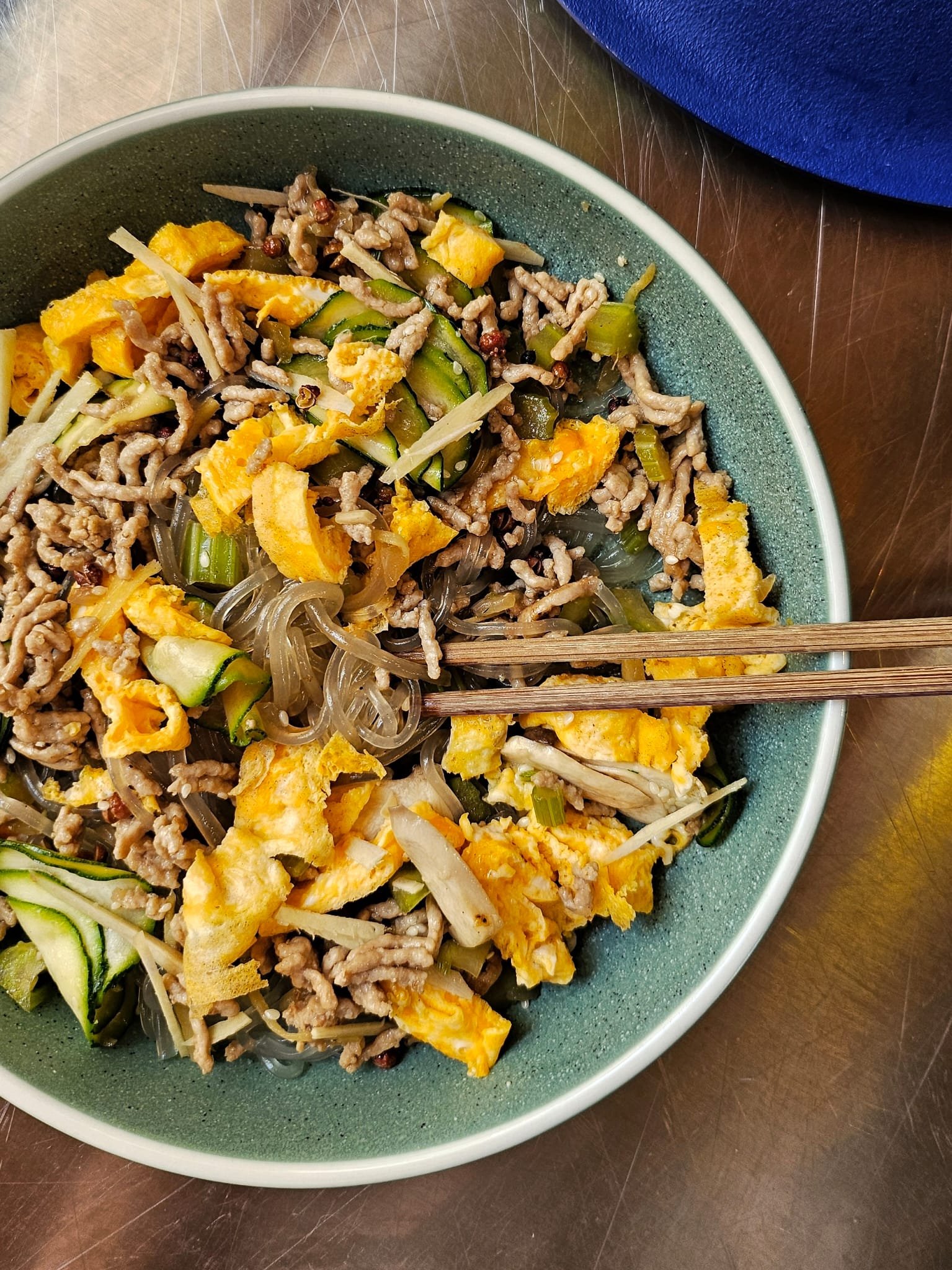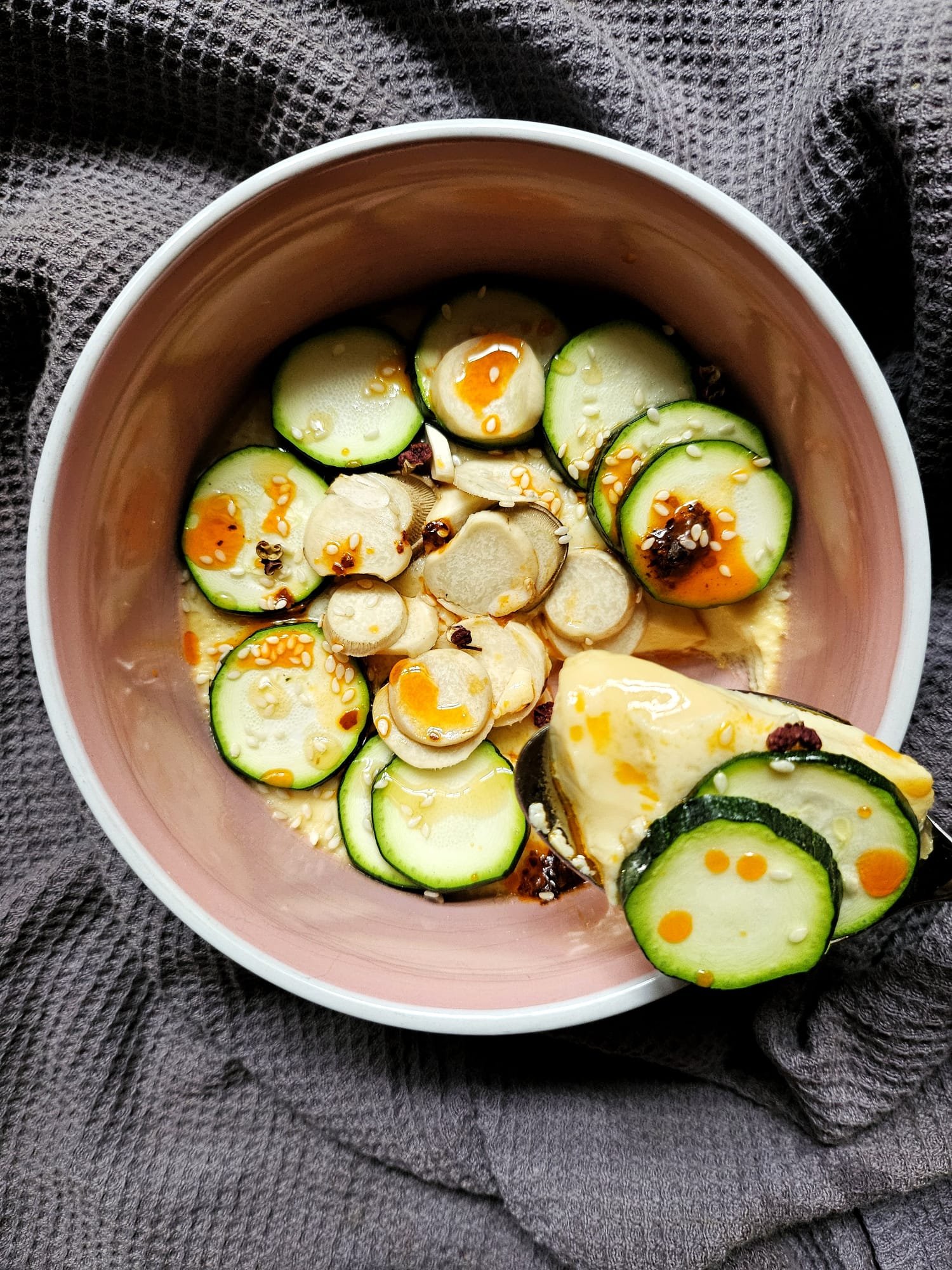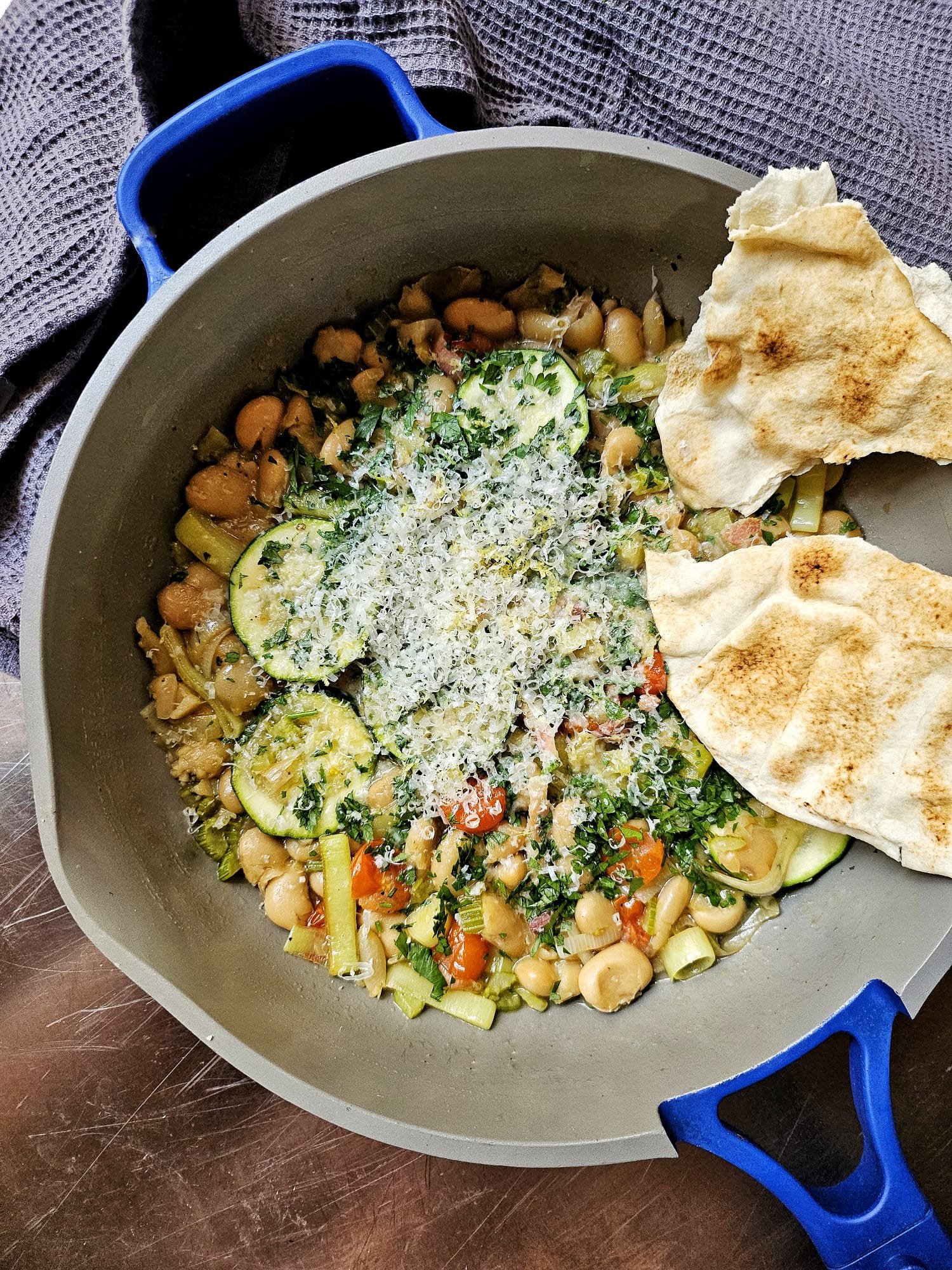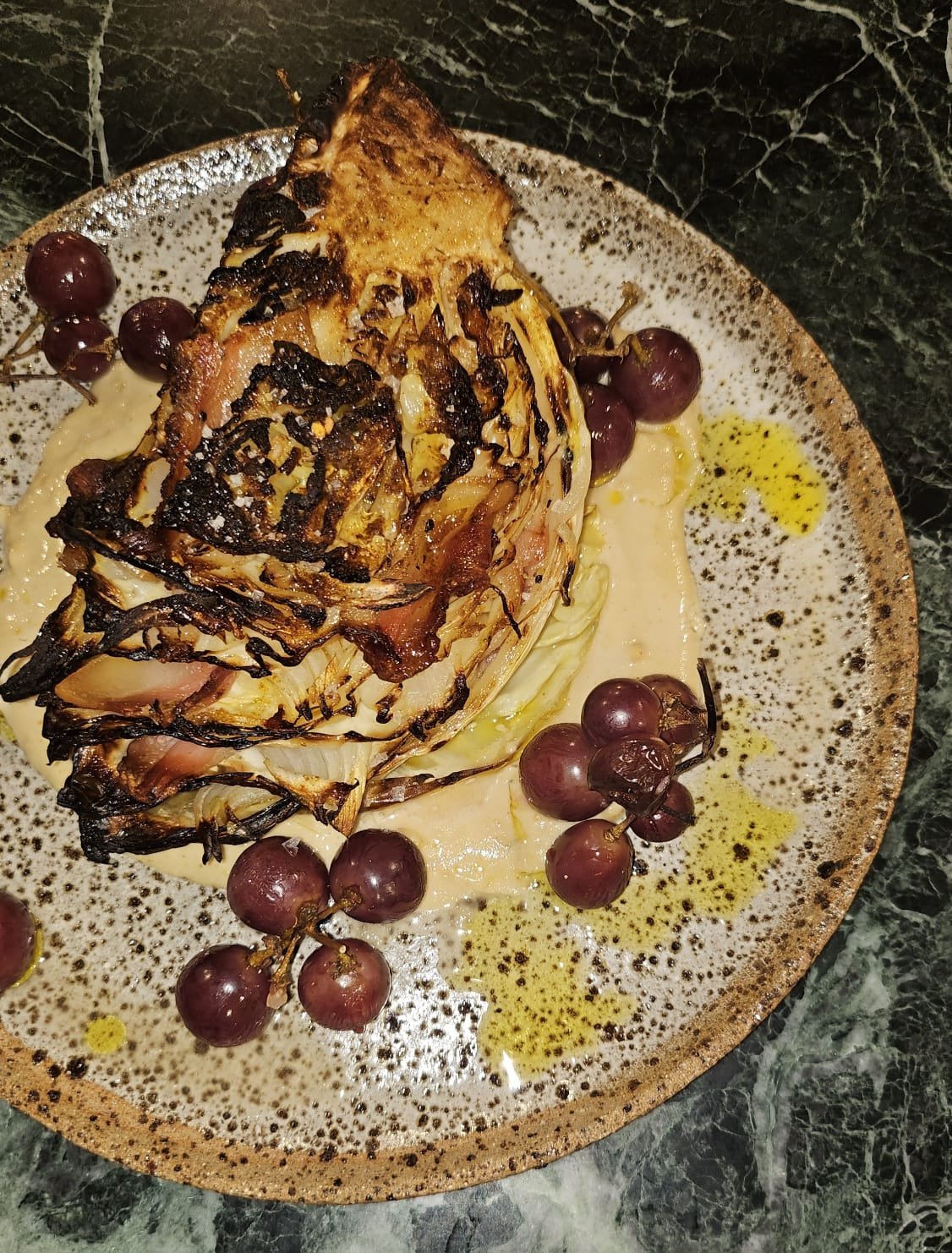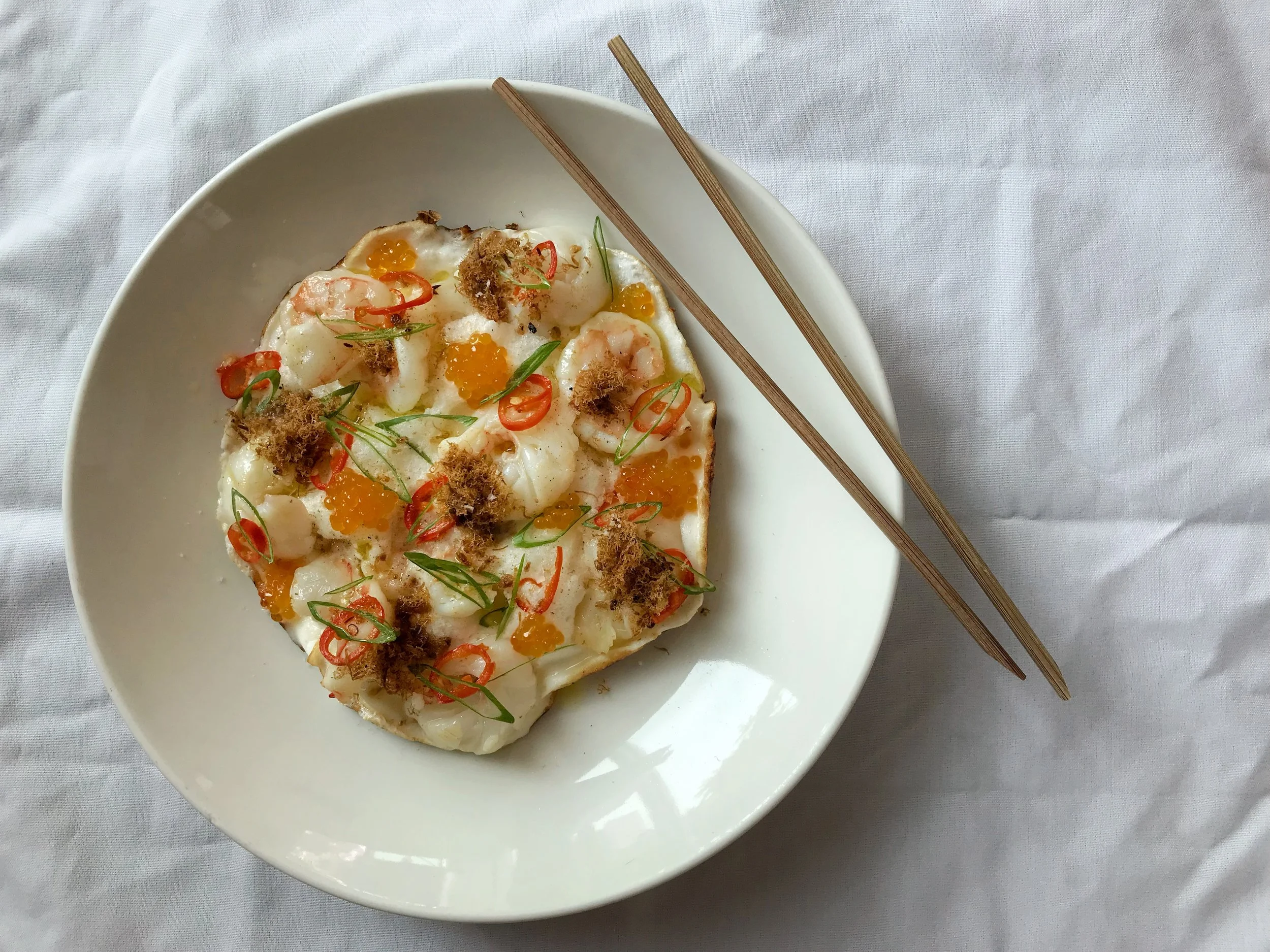We all need those recipes we can go to when we are short on time or inspiration, to deliver something delicious, every time. It’s a good way to minimise the temptation to order in, too.
I love this easy pork mince dish, spiked with humming, numbing Sichuan pepper, crunchy celery, and heaps of ginger. It's a cinch to make and can be folded through noodles (I’m loving Korean sweet potato noodles, aka. dangmyeon), or served over steamed jasmine rice. I like to add a little omelette action on the side, which gives the dish a little more body and protein satisfaction.
Serves 2.
Ingredients
2 stalks celery, diced into 1cm cubes
1 thumb-sized piece of ginger, peeled and julienned, plus a little more for garnish
1 clove garlic, minced
1/4 brown onion, finely diced
300g pork mince
3 tbsp Shaoxing cooking wine
2 tbsp soy
1/2 tsp sesame oil
Ground white pepper
Sichuan peppercorns
Sichuan pepper oil (aka prickly ash oil)
Sesame seeds, to garnish
Optional
Finely sliced veg. I used a mandoline so that everything is super fine, as I usually let the residual heat from cooking wilt the veg a little, so that there’s still a little texture going on. I like to use mushrooms (in this case, baby King Browns), and zucchini, but you could throw in squash, asparagus, sliced snow peas, etc.
You can also do like I do, and add in an omelette. In this case, I make a thin omelette, rolled it and sliced it, before folding it into my noodles.
Method
In a pan on medium-high heat, sweat finely diced onion, garlic, and ginger in a tsp neutral oil, for 1-2 minutes until the onion is translucent. Add diced celery and stir fry for another minute or so (you want to keep a little crunch for texture). Remove all contents from the pan and return the pan to heat. Add the pork mince with a little oil, and brown the mince.
Add back the aromats you set aside. Add in soy, shaoxing, and sesame oil to taste. Season with ground white pepper, Sichuan pepper.
At this point, I like to add finely sliced veg like baby King Brown mushrooms and/or zucchini and let them wilt in the residual heat. Remove pan from heat, add a splash of Sichuan pepper oil, garnish with more fresh ginger, and sesame seeds.
Fold through noodles like these Korean sweet potato ones - I like them because they have a bouncy chew and are conveniently low carb if you’re looking to balance that part of your meal out. You can also serve this minced wonder over steamed jasmine rice and add an omelette or fried egg to seal the deal.
